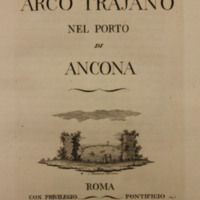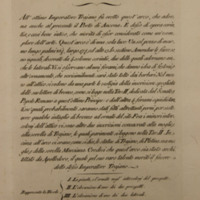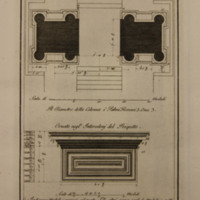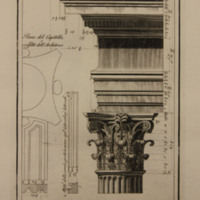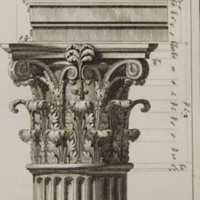Engraved Throughout
Technical Drawings

Giovanni Battista Cipriani, Monumenti di fabbriche antiche
Roma: 1796-1803
NA260 .C6
Title page of the first volume: detail showing vignette and book stamp.
A Fine Line: Engraved Technical Drawings
The earliest printed books on scientific and technical subjects tended to be illustrated with woodcuts. The advantage of the woodcut for printers was that, as a relief technique—i.e. one in which the part of the image to be printed is cut out in relief from the rest of the block, much like a stamp—woodcuts could be printed on the same press as moveable type. Engravings, on the other hand, had to be printed on a different kind of press. Compared with the woodcut, however, engraving allows for the depiction of very fine detail, and it was this factor that led to the almost universal adoption of engravings for scientific and technical drawings, including architectural plans of the sort featured here. In this case, engravings are used to depict famous monuments from antiquity, such as the Arch of Trajan in Ancona (see below). The drawings themselves were provided by Giovanni Battista Cipriani, a highly versatile artist who also worked as a painter and interior designer. They were then transferred on to copper plates by Cipriani’s friend Francesco Bartolozzi. This division of labor between original artist and engraver was common in the production of engravings.
